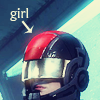You might look at the post title and go: "Buh? The hell?", and I wouldn't blame you. It took me almost a year to understand this concept and I can't even remember the proper term for it. In fact, I had a 1/3 of a class on it and for the first time in my life I received less than a 'B' on something English/Humanities-related. But because this can apply to animation, I wanted to discuss it here.
I'll start by asking you the same question I asked myself after re-watching
Wall-E for the fiftieth time:
Which is superior: 3-D animation or 2-D animation?Seriously now, don't blurt out an answer. Sit and think about it for a good solid minute, come up with reasons and arguments, and then keep reading this blog. Whatever you do, keep reading!
First, let me start off by saying this:
Wall-E is a brilliant and heart-warming masterpiece. I utterly adore it to itsy-bitsy pieces. The fact that about 85% of the movie relies on pantomime to convey story is utterly fantastic and a concept that I adore and can babble endlessly on. It's my personal pick for Best Picture of 2008, maybe a tie with
The Dark Knight.
That being said, it is (in my opinion)
inferior to most 2-D animated features. Just as most 3-D features are. There are exceptions to this rule, and I'll go into detail later.
Two dimensional animation is superior because it is made directly from the artist/animator. Each cell of animation was
hand-drawn from the animator. There was one person and one person only involved with that character on the page, and made them come to life by
their own hand. Every expression, every movement,
everything done with no interference from a machine, other animators, etc. All was created specifically by the animator themselves, and everything about the character on the page is inherent to the artist/animator's hand.
In computerized animation programs and just about any animator can manipulate a 3-dimensional model stored on the computer into doing whatever they want. Sure, only the best programmers and can get specific expressions, but with enough practice anyone can duplicate it. And therein lies what will always make 3-D animation inferior: the duplication. The mediums. A
program made the art--not the human. A bunch of 1s and 0s created what the human hand didn't.
Think about the difference between a photograph and a painting. A painting is a purer form of art because it cannot be reproduced in exact detail, even with the same materials. Even the best copy-cat with the same type of materials, brushes, oils/paints, etc. cannot produce an exact copy because of the little things like paint clumping (for oil paints) or brush strokes, or even a hair of a paint brush being left behind on the canvas in the paint. A picture can be recreated in the same lighting and position easily, or at the very least you can take the original negative and create as many copies as you want. The machine created the art--not the photographer. In reproduction it loses its' purity.
The same with hand-drawn animation and computer animation. With the machine acting as the medium, the purity becomes lost and reproducible. Sure, it takes time and skill, but in the end you can create an exact copy of what was already made. With hand-drawn animation it take innate talent to be able to create recognizable characters on a page, much less copy the
exact ones over and over ad infinitum. Could you copy Disney's
Pocahontas cell by cell over and over again? Or Production I.G.'s
Jin-Roh: The Wolf Brigade? I think not.
Look back on
Toy Story now. At the time, it was a brilliant feat of animation. Now the textures look kinda silly and out-dated compared to what can be accomplished these days. Yet something like
Beauty and the Beast is still incredibly impressive in terms of fluidity, motion, and character design, etc. Seriously.
If things like this interest you, I suggest taking a Humanities course or a Philosophy one. They think about this kind of stuff all the time. ^_^









